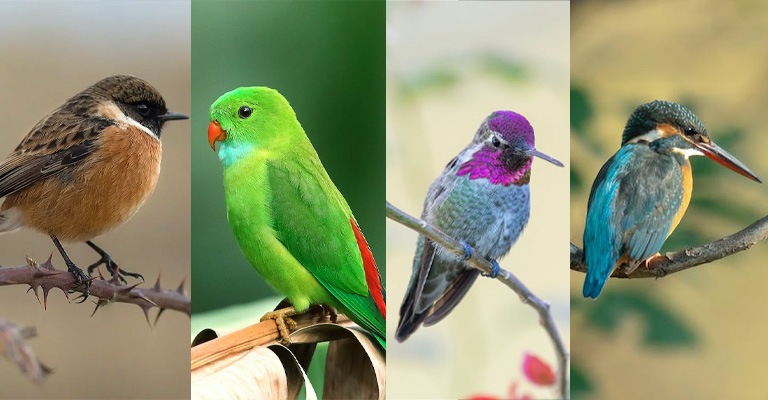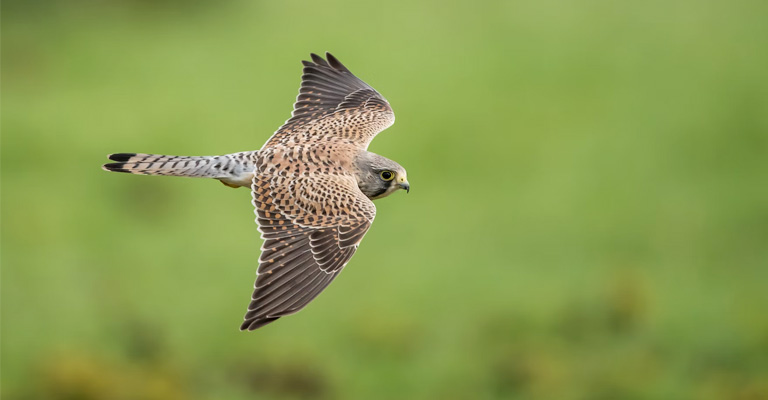It takes just one glimpse for professional bird watchers to identify birds in the wild. However, things may not go easy for the novice bird watchers.
Birdwatching can be a delightful and rewarding hobby but also a bit exhausting for beginners. After all, there are over 800 species of birds in the U.S. and Canada.
So, where do you start? Many bird identification guides are available online. Most of them will tell you to focus on specific details such as plumage, breast bands, etc.
These factors are genuine and useful, but wide in selection when it comes to identifying a bird in the wild. So, what to do? Start with us!
We have prepared an all-through bird identification guide for you. After completing our article, you will know how to identify any bird as a beginner. Let it be simple and easy for you.

Bird Identification Guide
When you are set for your hobby, you are dealing with not one or two, but over 800 thousand species. Bands or markings can offer you specific information about a bird, but they are not too specific about the genre.
You should start by learning which group the ghost bird belongs to and then become familiar with the shape, color, and nature of the bird. To be more elaborate, read this part of our article.
Size and Shape
The first thing that we notice is the size and shape of a bird. You can take the size of a sparrow as a reference. No! Not always do you have to bring a ruler to measure the bird that’s half a mile away from you. Neither you can! 😀
You can also compare the size with similar objects in your collection. For example,
- Small birds, like sparrows and finches, are usually around the size of a tennis ball.
- Medium-sized birds, like robins and bluejays, are about the size of a soda can.
- Large birds, such as hawks or crows, can be as big as a football.
It’s easy, right? Next, you will switch to shape. Focus on the details of the bird’s shape. Pay attention and figure out whether the bird is compact and round or sleek and slender. Does it have a long neck or a short tail?
The features will help you get one more step closer to identifying the birds.
Color and Plumage
Color is a significant clue for bird identification. Take note of the bird’s overall color, as well as any particular markings, such as stripes, spots, or patches.
Also, observe the color of its beak, legs, and feet. Here are some color-related tips:
- Birds with bright colors like cardinals and goldfinches are often easy to spot.
- Muted, camouflaged colors are a sign of a bird adapted to its habitat, like sparrows in grassy areas.
Behavior and Habitat
You need to discover a bit about the habitat of the bird. Some birds are only found in specific regions like the African red-crested turacos. They are only spotted in western Angola.
Also, observe how they behave openly. It will serve as a significant clue. Consider the following,
- Is the bird (1) perching in a tree, (2) wading in water, or (3) hopping on the ground?
- Is the bird often noticed in open fields, forests, wetlands, or urban areas?
- Is it hovering like a hummingbird or diving into the water like a kingfisher? Meaning, do you notice any specific behavior?
Indulge yourself with a lot of questions and eventually proceed to the answer. You will soon identify the unknown bird.
Birdsongs
Another powerful feature to identify the birds is their voice and tone, in short birdsongs. You can easily detect which group they belong with the sounds they make. But it takes time to learn.
A long way short! You can start from your locality and hear out specific bird calls near you. Also, it’s a digital world. Plenty of applications are available in Google/ Apple Store that have clips of bird calls. You can hear them out using headphones and determine the bird.
Seasonal or Not
The time of year and your geographical location can greatly narrow down the possibilities. Many bird species are migratory, so knowing which birds are present in your region during a particular season can be of help. Field guides based on your area can be very useful too!
For example, the Arctic Tern travels an incredible 44,000 miles round trip between its breeding habitats in the Arctic and its wintering grounds in Antarctica. Learn more about birds’ migration here.
Here are a few factors you can get started with. Additionally, you should also follow the tips below once you master learning from the features mentioned here.
Level Up as a Pro Birder FAST

After the preliminary features, it’s time to level up and be part of a community. Having connected to the bird-watching group can give you access to wide resources and become a pro in a short time. Here’s how,
- Field Guides and Birding Apps: Field guides are valuable resources for bird identification. Birding apps like Merlin Bird ID, iBird, or Audubon Bird Guide are also handy tools. They offer images, descriptions, and audio clips and assist you to identify the bird on the spot.
- Take Photos or Sketches: If you have a camera, try to take a photo of the bird. You can simply do it with your smartphone too. A quick snapshot can be helpful for later identification or sharing with experienced birders.
- Join A Community: Clubs and online communities are fantastic places to start for a bird watcher. You can share your observations there. Skilled birdwatchers are often more than willing to help newcomers identify birds.
So far, you have to follow and learn the points we have mentioned here. It will help you get to the pivotal point to begin and soon elevate yourself as a birder.
What’s More Exciting?
We offer regular and useful tips on feral and tamed birds. Our articles are for beginners, professionals, and those who want to extend one more hand to help our little feathered friends.
Hence, follow our blog section and share it with others to help us grow. We will soon show up with another resourceful guide on birds. Happy birding!